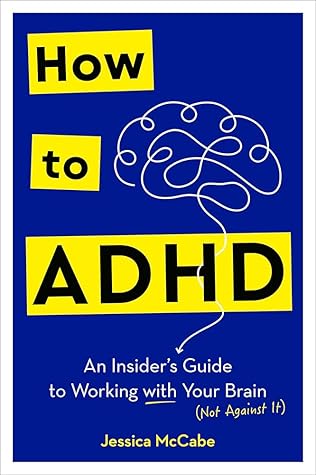More on this book
Community
Kindle Notes & Highlights
Read between
May 20 - June 2, 2024
Be clear on the goal. Make sure everyone agrees on what the goal is—and understands why you’re working toward it.
Allow us to achieve the goal in a way that works for us. ADHD Brains are capable of accomplishing a lot; we just might go about it a bit differently. Allowing for equifinality—achieving
Look for the “and.” I love this concept from the book Crucial Conversations.
Stay in your lane. At the end of the day, you are your Brain’s partner/friend/parent/roommate, not their coach or therapist.
4. LOOK FOR THE GOOD Everyone’s brains, by default, are designed to notice (and remember!) what’s wrong more often than what’s right, making it easy to miss what’s actually going well.
Notice their effort. Failing
Flip the coin. Remember, the things we love and the things that frustrate us are often two sides of the same ADHD-trait coin.
Assume best intent. When you assume that someone with ADHD cares about an issue they agreed to address, you’ll be right more often than wrong.
Celebrate their successes. Specific, immediate positive feedback is incredibly motivating to ADHD Brains. When we make progress on something important to us, give us a high five! Throw a mini dance party! Do whatever makes us feel good!
Almost every tool we need to use costs us something—time, money, energy. We have to find them, learn how to use them, adapt them so they work for us, defend our need to use them, reapply for them, pay for them, and—oh yeah!—find ways to remind ourselves to use them. And
Because ADHD is a chronic condition, these aren’t tools we need temporarily, either.
all laid out, it’s clear managing ADHD is
As I learned more about systemic issues, I came across the social model of disability, which argues that disability isn’t inherent to a person’s medical condition—it results from living in a world that doesn’t cater to their needs the way it does the needs of those who are non-disabled.
realized that it was far easier to create an environment that accounted for neurodiversity than it was for people to not be neurodiverse. So why weren’t we starting there?
I learned there is a term for this gap—“self-discrepancy”—and it is responsible for a great deal of the emotional turmoil and negative mental health outcomes anyone can experience when who they want or feel they’re supposed to be doesn’t match up with the person they actually are. It’s not unique to ADHD.
universal design (n.) The design of a product, service, or environment to be as accessible as possible, to as many people as possible, without the need for adaptation or accommodations. Universal design works well because what creates accessibility for one group often makes everyday life easier for everyone. Consider curb cutouts. They allow wheelchair users to navigate crosswalks, but they are also helpful for those who are traveling with luggage, delivering packages, or riding those dope little electric scooters.


